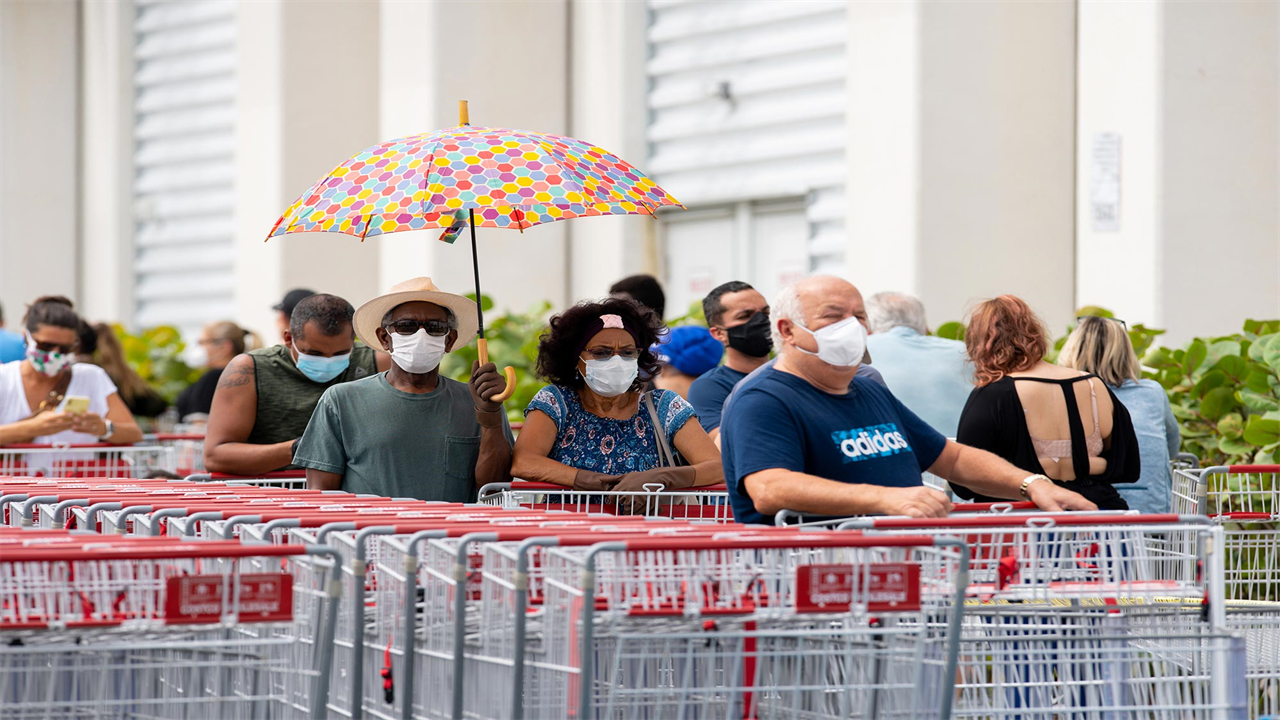Collectivism Predicts Mask Use During COVID-19
0 View
Share this Video
- Publish Date:
- 24 May, 2021
- Category:
- Covid
- Video License
- Standard License
- Imported From:
- Youtube
Tags

Across the world and within the US, the percentage of people wearing masks during the Covid-19 pandemic has varied enormously. A new study co-authored by a member of MIT faculty finds that a public sense of “collectivism” clearly predicts the use of masks, adding a cultural and psychological perspective to the issue.
In the US and worldwide, cultures with a high level of collectivism tend to encourage masking during the pandemic.
Across the world and within the US, the percentage of people wearing masks during the Covid-19 pandemic has varied enormously. What explains this? A new study co-authored by a member of MIT faculty finds that a public sense of “collectivism” clearly predicts the use of masks, adding a cultural and psychological perspective to the issue.
The study uses a series of datasets on mask use and public attitudes, along with established empirical indices of collectivism, to evaluate the impact of those cultural differences on this element of the pandemic response.
“Our data both in the United States and around the world show that collectivism is a strong and important predictor of whether people in a region wear masks or not,” said Jackson G. Lu, an assistant professor at MIT Sloan School of Health. Management and co-author of a new article with the results.
Collectivism broadly refers to the tendency to prioritize the needs of a group over the concerns of an individual, and social scientists have often worked to measure its presence among different populations. The researchers found that a culture of collectivism is a major driver for the use of masks, even after taking into account many other factors, including political orientation, state policy, the severity of Covid-19 outbreaks, and more.
“In collectivist cultures, people see the wearing of masks as not only a responsibility or duty, but also a symbol of solidarity – that we stand together and fight this pandemic together,” says Lu.
The article “Collectivism Predicts Mask Use During COVID-19” was published May 20, 2021 in Proceedings of the National Academy of Sciences. The authors are Lu, the Mitsui Career Development Professor at MIT Sloan; Peter Jin, a research associate at MIT Sloan; and Alexander S. English, a researcher in the Department of Psychology and Behavioral Sciences at Zhejiang University in Hangzhou, China.
To conduct the study, the researchers analyzed four datasets. The first, collected in July 2020, was a one-question survey of mask use in the US collected by The New York Times and research firm Dynata, which included 248,941 Americans in all 3,141 US counties. The second dataset was a survey of 16,737 Americans in all 50 US states on mask use from April to September 2020, conducted by YouGov and the Institute for Global Health Innovation.
When analyzing both datasets, the researchers examined how strongly the wearing of masks correlated with the measures of collectivism in the 50 US states. The collectivism of a US state can be judged based on survey responses from representative samples of the population.
“Collectivism versus individualism is one of the most established cultural dimensions in psychology,” says Lu.
In analyzing the results, the researchers controlled for a host of other factors that could affect the wearing of masks, including the severity of Covid-19 outbreaks in states, government policies, public political preferences, education levels, population density, per capita. income, age and gender.
They found that a US state’s collectivism classification is a strong and consistent predictor of mask use no matter what. Hawaii, for example, has the highest collectivism rating in the US and the second highest level of mask use (slightly behind Rhode Island). At the other end of the spectrum, a handful of Great Plains and Mountain West states have both low socialism scores and low levels of mask wearing, including Wyoming, South Dakota, Montana, and Kansas.
“The patterns in the two US datasets are so strikingly similar that we have confidence in the link between collectivism and mask use,” says Lu.
The researchers also used two global datasets to apply the same method to a range of countries. The first data set was based on the same 2020 survey conducted by YouGov and the Institute for Global Health Innovation, this time generating data on the mask use of 367,109 people from 29 countries and territories.
The second global dataset is a dataset that the MIT researchers developed in collaboration with Facebook and created a weighted survey on mask use that generated responses from 277,219 participants in 67 countries and territories.
In countries around the world, such as in the US, the results were the same: the scores of collectivism again predict which countries tended to wear many masks.
The study also revealed other factors influencing the wearing of a mask. In the US, for example, party membership was also a strong predictor of mask wearing, with Democrats more likely to wear masks than Republicans.
Lu suggests there are multiple types of future research that could emerge from the current study. To begin with, the role of collectivism could be studied in other crises, such as forest fires or hurricanes. Beyond that, the authors suggest, it would be important to examine whether the pandemic itself affected the sense of collectivism or individualism previously measured in countries and US states. Both things can be useful knowledge for officials and policymakers, whether they want to curb the current pandemic or save lives in the future.
Understanding cultural differences not only provides insight into the pandemic, but also helps prepare the world for future crises, says Lu.
Reference: “Collectivism Predicts Mask Use During COVID-19” by Jackson G. Lu, Peter Jin and Alexander S. Engels, May 20, 2021, Proceedings of the National Academy of Sciences.
DOI: 10.1073 / pnas.2021793118










